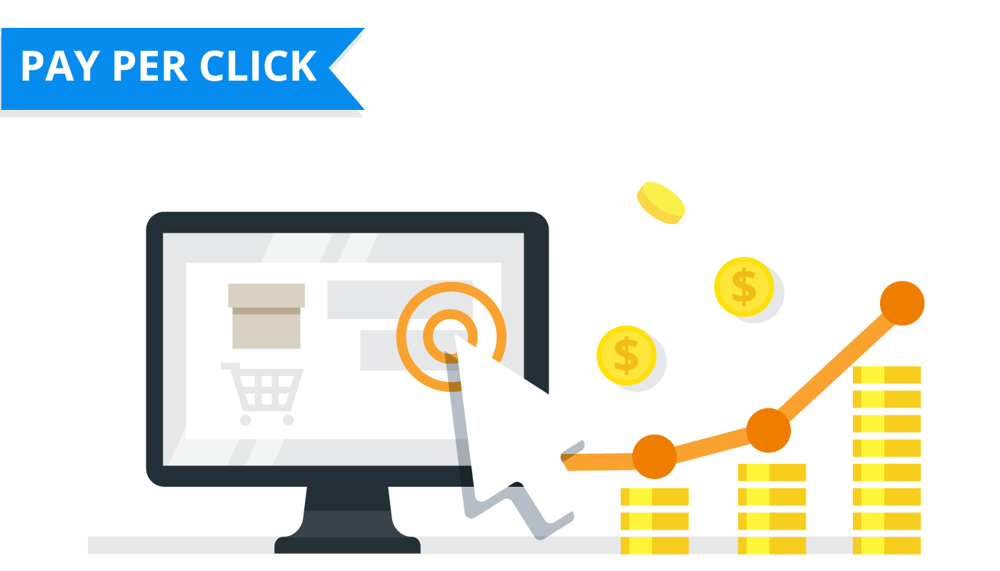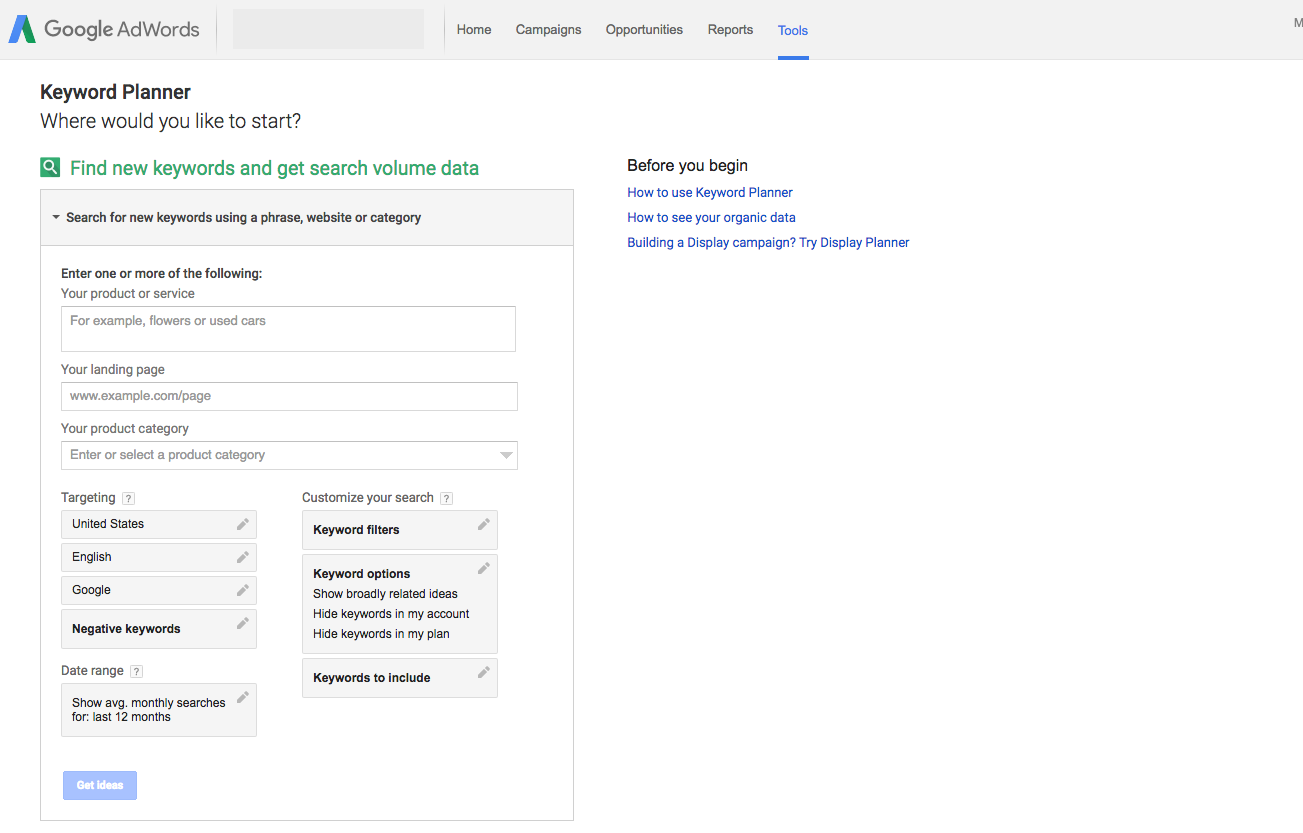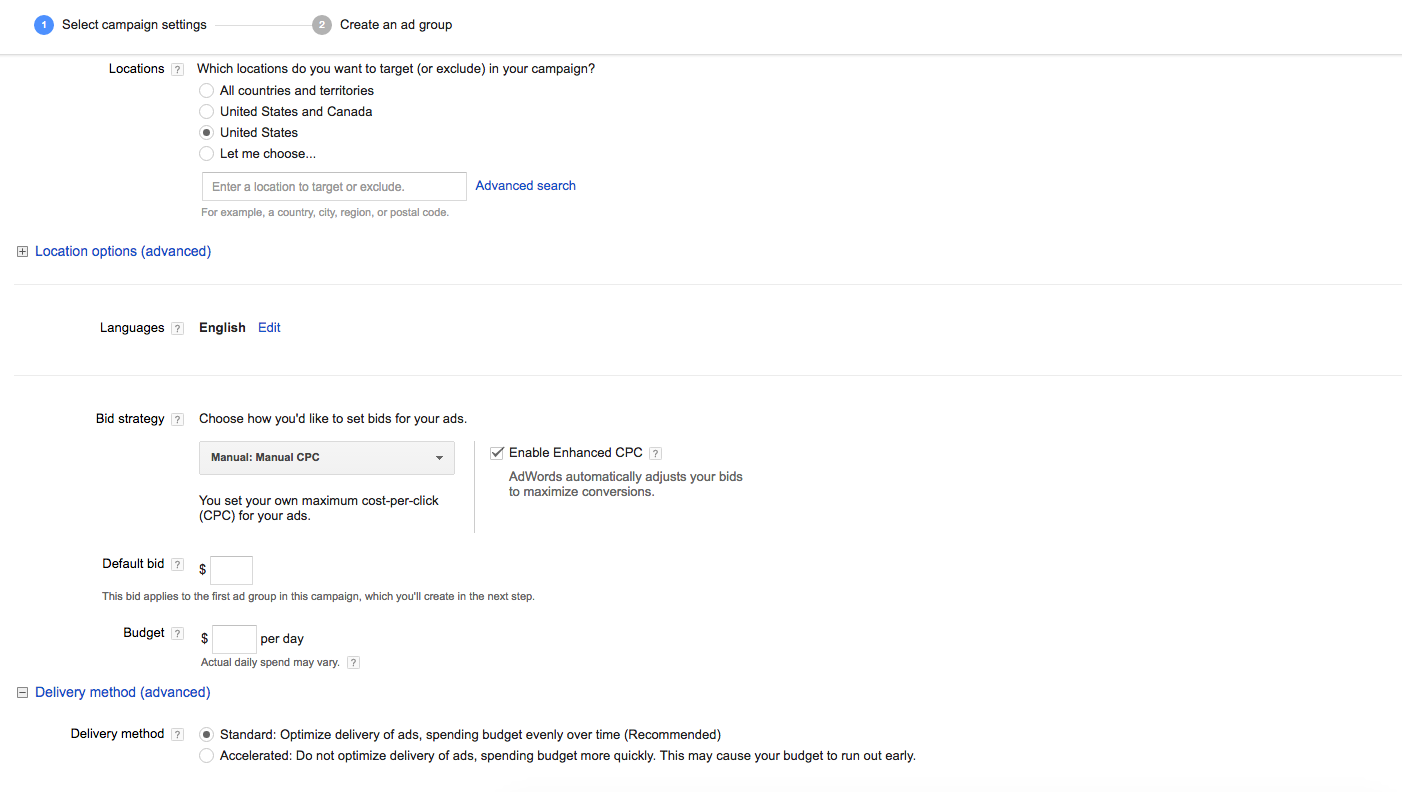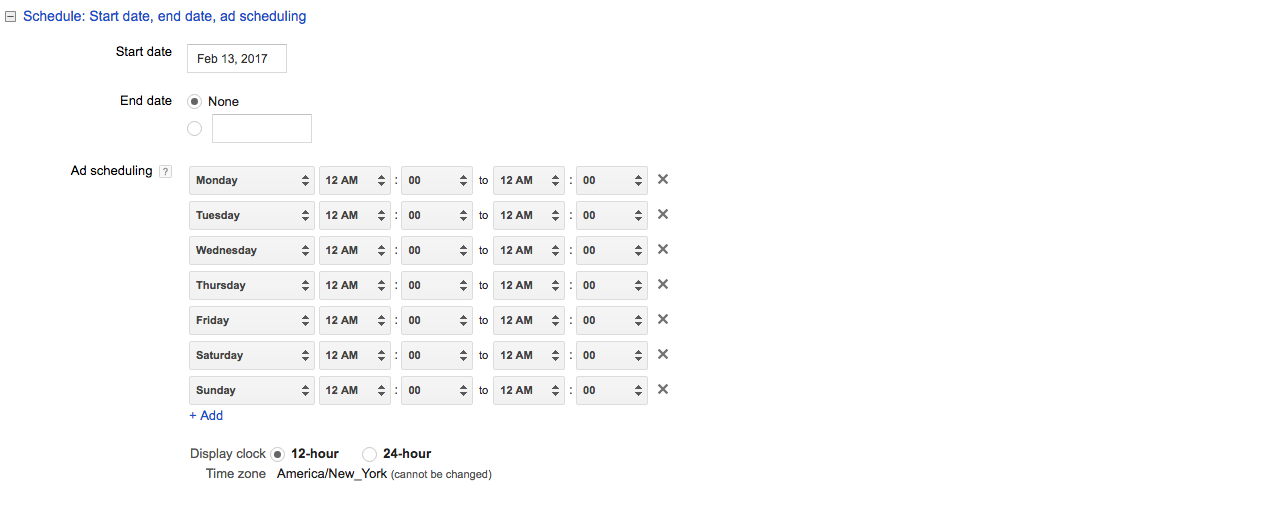
Learn Your Client’s Goals
At the onset of any campaign, take time to learn about your client’s business operations and goals. You can’t start building a successful campaign without understanding how your client perceives their business. Sit down and ask open-ended questions like:
- Who is your target customer?
- What are your goals for the coming year (revenue growth, geographic expansion, etc.)?
- What’s your typical sales cycle, or how long does an average consumer interact with your product/service before making a decision to purchase?
- Why should customers choose you instead of your competitors?
- What offers have worked in the past to attract new customers?
From these questions you can get a sense of what metrics matter to your client and how to manage both your and your client’s expectations in terms of behavior and timing.
Research & Categorize Keywords
Once you have a decent understanding of your client’s business, you can move to the research phase of the campaign. Start researching keywords to determine how people are phrasing searches that are relevant to the business.
To conduct your research, Google offers access to Keyword Planner for anyone who’s signed up for an AdWords account. You can type in words or phrases to see average search volume, expected costs per click, and suggestions for similar queries.
Other useful keyword research tools include paid options like SEMrush and free options like Ubersuggest. Once you’ve determined a list of keywords relevant to your target audience, organize these into similar themes, which will form the foundation of ad groups.
For instance, a bakery’s keyword selection may segment cakes for different occasions into categories like the following:
Wedding Cake
- wedding cake bakery
- wedding cakes near me
- wedding cake design
- wedding cake cost
Birthday Cake
- custom birthday cake
- birthday cakes near me
- birthday cake delivery
- order birthday cake
The keyword selections for these campaigns may evolve as you get further into the campaign and begin to learn more from seeing how people react and which keywords are working, which are not. Also, stay observant to which unexpected search queries may show up that can inspire new groups and new content.
Write Ad Copy
Once you’ve categorized keywords, you can begin writing ad copy. Note that within AdWords campaign structure, an ad group contains a set of ads and a set of keywords, with the ads eligible to show when any of the keywords are searched. Ideally, you should include at least two ads in each ad group, varying copy or landing pages. By rotating ads against each other, you can determine which tactics are most effective for driving qualified clicks and, ultimately, conversions.
AdWords now requires all ads to be written in the new Expanded Text Ad format, with two 30-character headlines followed by a single 80-character description line. You can also add two URL paths, up to 15 characters each.
Headline 1 - Headline 2
Description
url.com/path1/path2
Make sure that your ad copy closely aligns with the keywords in the respective ad group. Users are most likely to click an ad that relates closely to the term they searched. For instance, say a user searches for “Custom Birthday Cake” and sees one headline simply mentioning “Local Bakery” and another actually saying “Custom Birthday Cakes,” that user’s obviously most likely to click the birthday cake ad. In addition, Google determines Quality Score (a factor that affects where ads appear in search results and how much you actually pay for clicks) in part based on keyword relevance to ad copy.
For more PPC ad writing tactics, see Wordstream’s article on best practices.
Build Your Campaign
Once you have your ad group structure, keywords, and ad copy ready, you can begin building a campaign in AdWords. When you start a new campaign, pay attention to key settings, which will affect how your ads are targeted and how you reach your audience.
Geography
Note that all location targeting is set on the campaign level within AdWords. You can type in countries, states, counties, metro areas, cities, or zip codes, as well as defining a radius around a select location. Ultimately, you can combine multiple forms of targeting to reach the exact geography you want.
Budgeting & Bidding
You’ll also set a default bid and establish a daily budget from this screen. When initially researching a campaign, Keyword Planner will show recommended estimates. Start with a conservative overall average bid from your research. For a daily budget, enter the maximum amount you’re willing to pay per day (divide by 30 if you’re working with a monthly budget). Be aware that you may spend slightly more than your daily budget if search volume is heavy, but AdWords will ensure you don’t spend above a set monthly amount.
Ad Extensions
In addition to the default ad copy, you can include a number of ad extensions that will show beneath your ads at Google’s discretion. These help to provide additional options for people to click through to your site as well as simply enhancing the visibility of your ad by taking up additional screen real estate. You’ll see these options during the campaign setup process and can also access them from the main interface’s Ad Extensions tab.
Some of the available extensions include:
- Location Extensions: show a street address that’s clickable to Google Maps
- Call Extensions: show a trackable phone number that allows users to call directly from search results
- Message Extensions: allow users to text a business directly from search results
- Sitelink Extensions: show links to additional sections of your site
- Callout and Structured Snippet Extensions: highlight additional features and selling points
- Price Extensions: show costs for products or services
- Review Extensions: highlight a quote about the brand from a third-party site
Ad Scheduling
If you only want ads to show up during certain times, you can define these periods down to the hour. For instance, you may want to show ads only during business hours for a B2B service. You can always change these times later if performance indicates that a certain time isn’t working so well or if you want to expand. You can also use bid adjustments to adjust bids up or down for various times so ads are more or less likely to show.
Conclusion
Now, once you’ve established your campaign, you can build out ad groups incorporating the ads and keywords you’ve researched and written. The next step is letting the campaign run and accumulate data. As you go, you’ll need to adjust bids, research new keywords, and identify new opportunities to test ad copy. You’ll also want to clearly report on the campaign’s effectiveness; for more on that, see our article on Determining What Data to Include in a PPC Report. If you want to get a running start, you can always take the AdWords Certification before taking on PPC responsibilities. It’s no substitute for real world experience, but it will give you a solid foundation. Remember, everyone who is a PPC pro started somewhere. Whether it’s your first campaign or your one-hundredth, there’s always more to discover.





